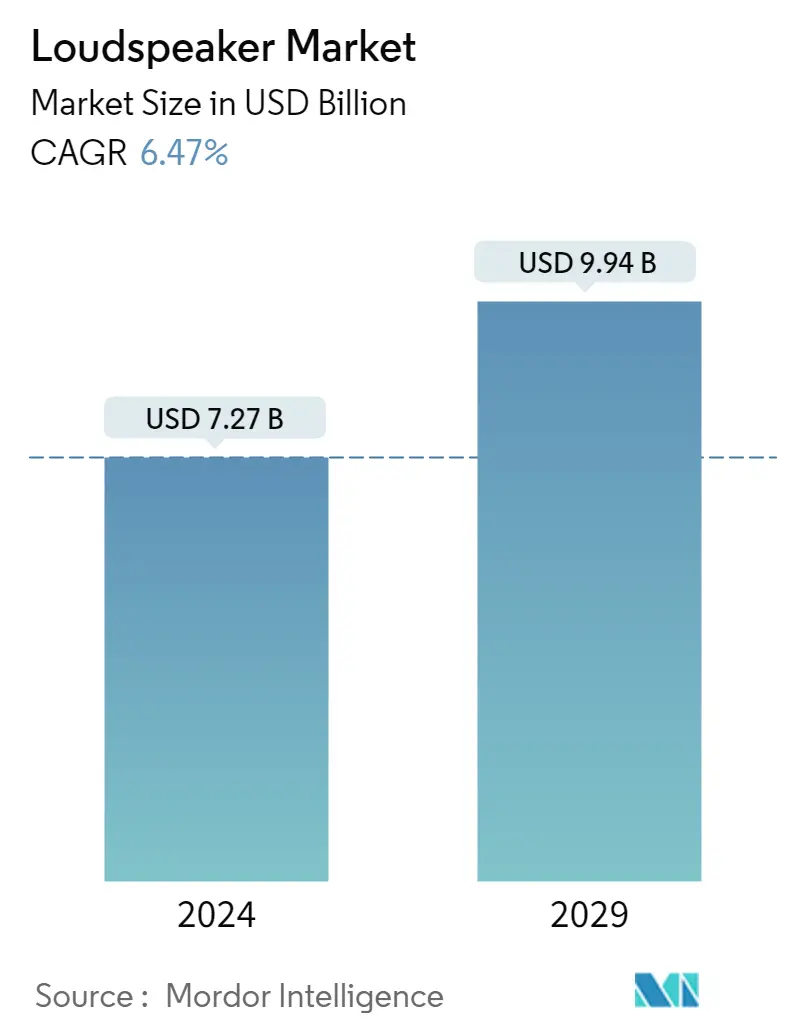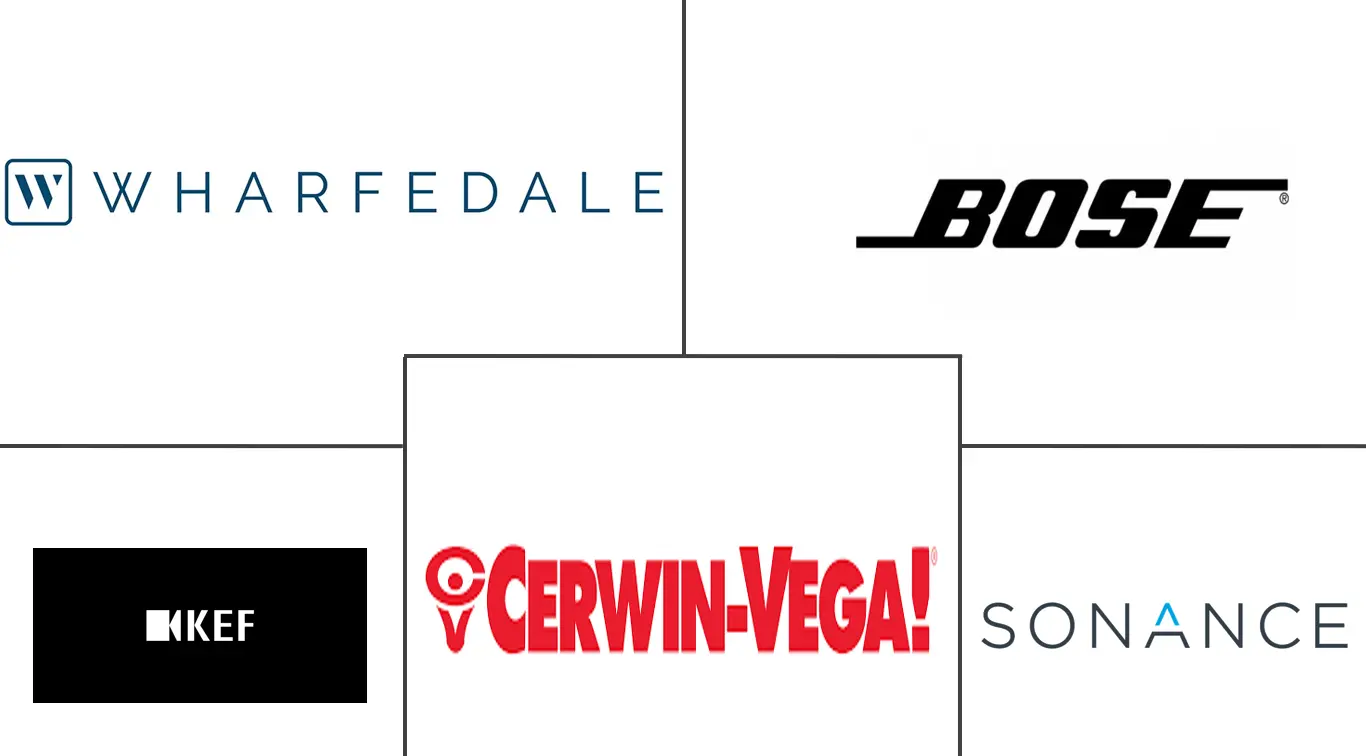Market Size of Loudspeaker Industry

| Study Period | 2019 - 2029 |
| Market Size (2024) | USD 7.27 Billion |
| Market Size (2029) | USD 9.94 Billion |
| CAGR (2024 - 2029) | 6.47 % |
| Fastest Growing Market | Asia-Pacific |
| Largest Market | North America |
Major Players
*Disclaimer: Major Players sorted in no particular order |
Need a report that reflects how COVID-19 has impacted this market and its growth?
Loudspeaker Market Analysis
The Loudspeaker Market size is estimated at USD 7.27 billion in 2024, and is expected to reach USD 9.94 billion by 2029, growing at a CAGR of 6.47% during the forecast period (2024-2029).
The increasing use of loudspeakers for communication purposes and the increasing use of multimedia equipment and digital modes of presentation in the corporate environment (ranging from investor presentations to gamification of employee metrics) stand to be two significant factors expected to boost the market growth for loudspeakers in the future.
- Increasing the use of loudspeakers for aural communication is driving the market. Acoustic communication systems, such as conferences, seminars, and attending events with large audiences, have increased the use of loudspeakers to a considerable extent. The compact size of in-wall loudspeakers is driving the market. These speakers are economical, have a level-headed sound range, and gradually replace the tower and individual speakers. They are also generally used in cafes and restaurants as they occupy less space.
- The demand for wireless audio technology is quickly expanding as a result of the growing prevalence of portable gadgets and shifting customer media consumption habits. Consumers are rapidly employing smartphones, tablets, and computers to broadcast audio on loudspeakers wirelessly. Such user behavior is propelling the proliferation of Wi-Fi and Bluetooth-enabled speakers.
- The global demand for voice-assisted speakers is expected to gain momentum over the forecasted period, which is expected to impact the demand for non-smart speakers over the coming years. This demand is pushing vendors to offer voice-assisted solutions. For instance, recently, Bose introduced the Smart Soundbar 900 with Dolby Atmos, which comes with support for Google Assistant and Alexa voice control. The speaker also features Wi-Fi and Bluetooth, a simple app for touch control, and is compatible with Spotify Connect and AirPlay 2.
- The COVID-19 pandemic had a notable impact on the growth of loudspeakers such as soundbars and subwoofers. As people were forced to spend most of their time within their houses due to travel restrictions, audio systems slowly became essential in every household. The enhanced audio experience offered by these devices enabled people to enjoy different types of content, from movies and free e-books to gaming. Furthermore, the rising trends of OTT platforms during the pandemic have contributed to market growth and are expected to increase over the forecast period.
However, harmful health consequences for children and other user groups and controlling frequency rules and regulations by the government are the major factors that may hinder the loudspeaker market's growth.
